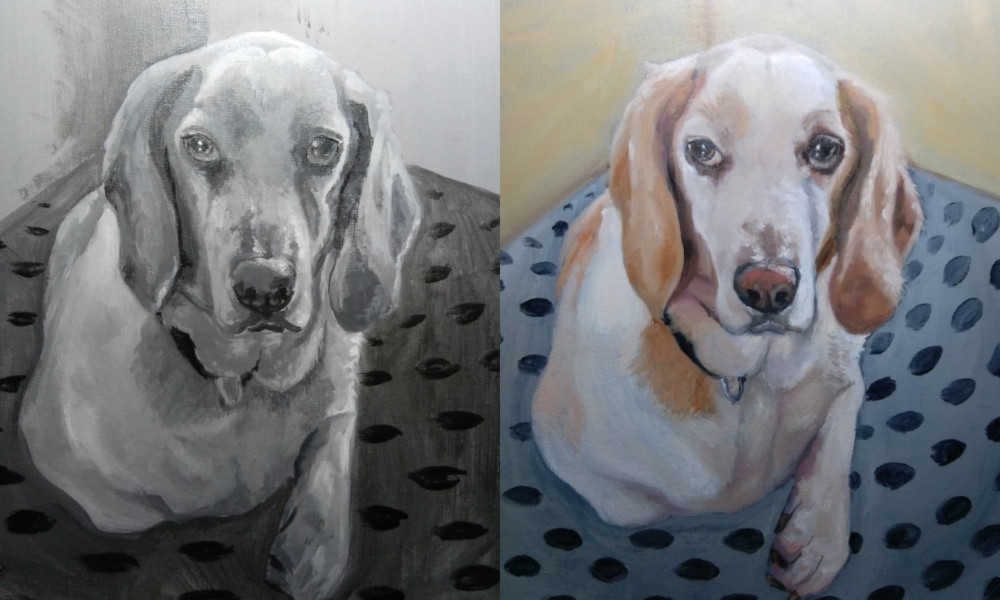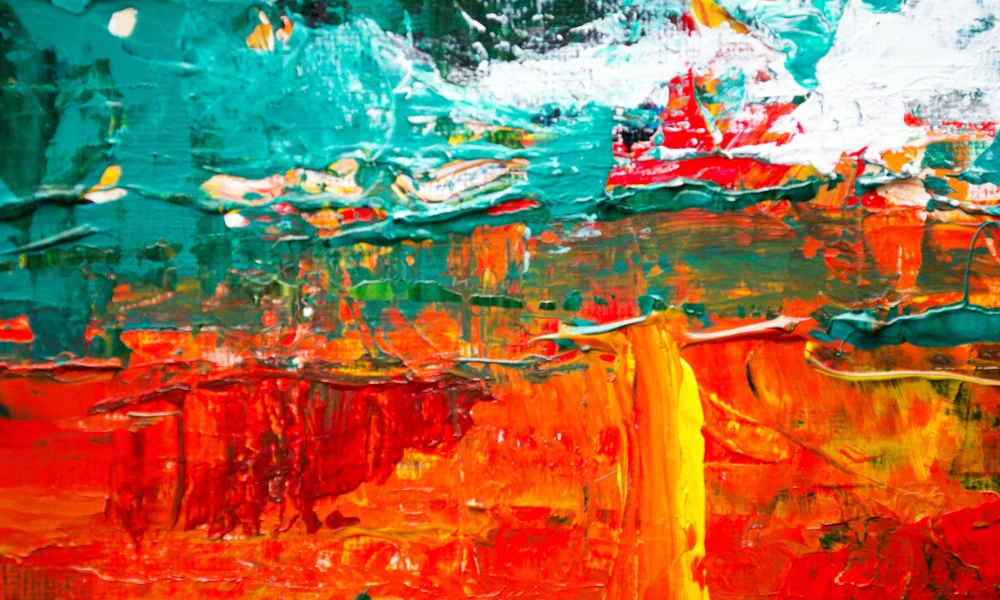Do you find all of the knowledge out there about oil painting a bit intimidating? It can be hard to know where to start, especially when there's so many different techniques and methods of painting. When I started out I had no idea what I was doing, and was fairly aimless in my approach to painting. Once I found my feet, however, I was flying, and once you learn about the basic techniques, you will be too!
The Fat Over Lean Rule
Just in case you haven't heard this very important note already; when painting with mediums, always paint with your faster drying mediums first (or less of your slow drying medium), and transition to more fatty, slow drying mediums to avoid the paint cracking. For example, if you're painting with linseed oil, use less linseed oil in the paints of earlier layers, and add a little more for each consecutive layer. Or, if you're using different mediums, such as liquin and linseed oil, go from the fastest drying to the slowest drying; in this case it would be liquin, then linseed oil. This is why it's a good idea to use a fast drying medium for underpaintings if you're doing one, such as Gamblin's galkyd gel.
Oil Painting “Alla Prima”
Alla prima, also known as wet-on-wet or direct painting, is when you apply wet paint- you guessed it- directly onto wet paint. This method is best for if you want a fast approach to painting, without having to wait for drying times, and you can get some nice effects and blending techniques from it. For blending a flawless gradient with wet paints, I strongly reccomend a goat's mop brush; the soft bristles and rounded shape make this brush excellent for seamless color transitions. The good thing about direct painting is that you don't have to concern yourself with the fat over lean rule if it's all painted in one layer.
Underpainting and Colored Grounds
An underpainting is a great aid for your overall painting; it helps to inform you of shadows, highlights and structure. Basically, you choose one color to paint the rough shapes, shadows and highlights of your subject, and you can then use this as a guide for your painting. Better still, the shadows and highlights can shine through if your paint is a bit thinned out, and you can use that as a natural looking shadow in itself. It's a good idea to do this on a coloured ground/base (the same color you want to do the underpainting with, thinned out and rubbed into the canvas so it's a bit lighter than the paint itself) as it looks more natural, and you can easily rub away mistakes with a rag. I personally still use a white ground, with a blue underpainting; it's harder to fix mistakes but it makes the paintings really glow!
Using a Grisaille
A grisaille is a monochrome painting, often black and white but you can also tint this to have a slightly burnt umber hue. They make for brilliant underpaintings, as you can wash thinner layers of color over them to let the natural shadows and highlights shine out, and paint details over them. The painting below was done using a very basic acrylic grisaille (for quicker drying times, although you can use oil paints for this also. I suggest using either Liquin or Gamblin's Galkyd mediums for quicker drying times) and thin layers of paint on top.
Color Theory Trick for Shadows
If you're new to color theory, you might not have heard of this little gem of a fact; if you mix a color with its complimentary (or the color at the opposite end of the color wheel), you get a natural looking shadow for that color. For example, on the second orange circle below, I mixed some blue and orange (and even put some straight blue into the wet orange paint!) and it comes out looking like a natural shadow!
Try painting impasto with a palette knife
When you're starting out, it's good to try all sorts of things to get to know what you enjoy. Try doing some impasto (thick paint) painting, and see how you enjoy it! If you want the paint to dry faster after using this painting technique, try using Liquin impasto or Gamblin's Galkyd gel as your medium!
Basic color mixing in Oil Painting
Mixing out your colors with a palette knife beforehand is incredibly helpful, as it saves your brushes a lot of wear and tear and helps you to get accurate colors in your painting. Reference your subject by putting the palette knife with the color on it at the same eye level as your subject; if the color is looking a bit too bright and you want a duller shade, add some complimentary to it. Try to look for different tones in your colors; ask yourself questions such as, is it really just a blue, or is it a slightly reddish blue? If you're worried about which colors you might need, start off with an ultramarine blue, yellow lake, scarlet lake, burnt umber, yellow ochre, titanium white, cerulean blue (or manganese blue hue from Windsor and Newton if you're looking for a much cheaper artist's grade version; I frequently substitute it for cerulean and notice little difference), and permanent alizarin crimson. This palette is fairly unlimited; the only thing I have extreme trouble mixing is a rich magenta, which is near impossible; so if you're planning on painting with magenta a lot, I recommend getting a tube of quinacridone magenta also. Try using less paint than you think you'll need when squeezing onto your palette; I use a small pea-sized amount of paint of each color (with the exception of titanium white, which I'd squeeze out a bigger bit of) to start with.
Mix your own black
Fun fact; you can mix black out of colors! Mix a bit of alizarin crimson with ultramarine blue to get a really dark (almost black) purple, then add some yellow to make it a true black! Adding linseed oil can deepen the richness of this black, as can layering it up. Check out how it looks below!
Oil paint is a wonderfully versatile medium, and whether you want to paint wild abstract landscapes or hyper realistic portraits, it lets you do exactly what you want (presuming you know how!). Play around with the medium and see what suits you best; you might think you want to paint in thick impasto, but maybe you actually enjoy the effects that carefully planned thin layers of paint gives you more!
What technique are you excited to try using, and why?








